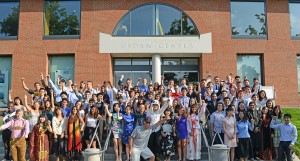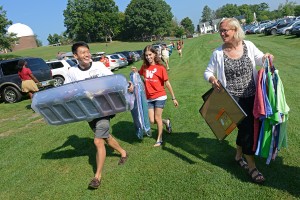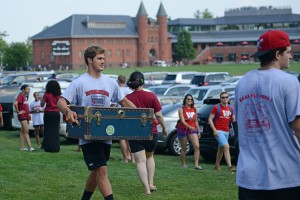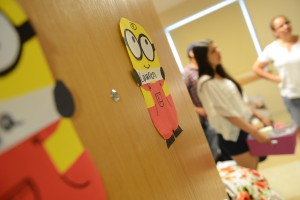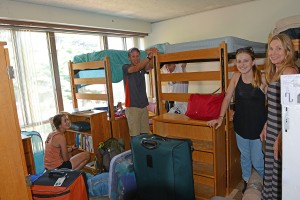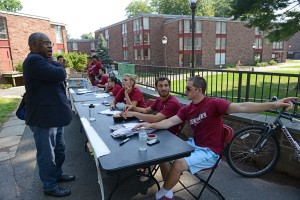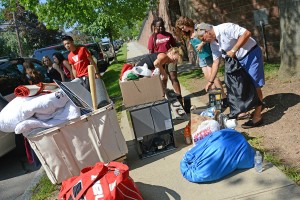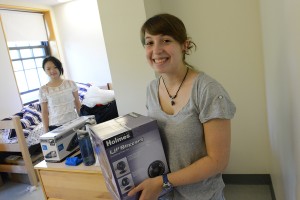Over the summer I finished a short book called Beyond the University: Why Liberal Education Matters. It will be published in the spring. I also reviewed two interesting books on American higher education, one that focused on teaching and the other providing a broad overview of the sector. You can find my review of Why Teach? here, and of Higher Education in America, from yesterday’s Washington Post, below.
Today classes begin, and I am delighted to head back to the classroom. Last night we heard some of the amazingly talented students who sing a capella at Wes, and now we are finishing our syllabi and checking our reserve readings. I am teaching the Past on Film and am looking forward to meeting the students.
American higher education is the envy of the world. Students flock to this country from all over, and the most highly ranked schools tend to be here. We should be proud!
American higher education is a mess. With high costs, low graduation rates, unhappy faculty members and coddled students, our universities are about to be radically disrupted by massive, technologically driven change. A good thing, too!
How to reconcile these opposing views? At a time when ambitious business-school professors and salivating entrepreneurs predict the end of the university as we know it, and at a time when we have never been more in need of an educated workforce and citizenry, the task of understanding the evolving mission and performance of American higher education has never been more urgent. Thank goodness Derek Bok, a two-time president of Harvard and a judicious, learned analyst of education, has taken on this undertaking. His book is too long to be called a report card, but it is a detailed progress report on the challenges and opportunities facing our nation’s colleges and universities.
One of the first things to note about higher ed in the United States is its heterogeneity. The problems of Harvard are not the same as the problems of the University of Texas or those of Scripps College in California or of LaGuardia Community College in New York. Bok tries to address schools in all their multiplicity, and his book suffers somewhat from the clunkiness that also characterizes higher ed. The book’s five sections discuss instruction from undergraduate to graduate and professional schools, as well as the market forces at work at each level. After the introduction, there are five forewords and four afterwords — not including the short final chapter called “The Last Word.” Yet one forgives redundancies because of the thoroughness of the research and the measured judgment consistently applied.
After noting the variety in higher ed, Bok acknowledges the extraordinary inequalities in the sector. Public discussion of education often focuses on the schools most difficult to get into, but “no more than two hundred colleges regularly reject more students than they admit.” At most highly selective schools (such as the one at which I am president), students receive some subsidy from the institution — even those paying full tuition. Students enrolled at less-selective schools get a small fraction of that support. Public institutions have seen dramatic reductions in state support for universities, and many flagship campuses are scrambling for donations and out-of-state, full-tuition-paying students. Community colleges enroll dramatically more people than other parts of the sector, but most of these students will never earn a degree.
Bok shows that the current quip that universities haven’t changed their teaching styles since the Middle Ages is just an empty canard. Universities have adapted surprisingly well to massive changes in technology, in demography and in developing streams of support. But Bok is no Pollyana, emphasizing that “universities have been especially slow to act . . . in improving the quality of undergraduate education.” Professors often confuse their desire to teach what interests them the most with what undergrads need to learn, and students in recent years are spending far less time on their studies than in past generations. Bok shows how schools cater to students in order to attract more of them, often with little attention to how campus amenities provide distractions from studying.
Bok knows the governance structures of universities as well as anyone, and he realizes that true curricular reform has to be led by the faculty. The challenge, from his perspective, is to make the faculty (at least its leadership) more aware of the empirical work on student learning that has been done over the past decade. Professors may be focused on their research and distracted by committee work, but the evidence shows that they care deeply about teaching effectiveness.
“The key to educational reform,” Bok writes, “lies in gathering evidence that will convince faculty that current teaching methods are not accomplishing the results that the professors assume are taking place.” Once the teachers understand the need for change, they will rise to the occasion and create classes that are more effective at developing the capacities that most agree are essential in college graduates. They have done so in the past, and they will do so again.
Bok’s confidence in the faculty is characteristic of his approach in this book. He believes that our varied system of higher education is very much capable of self-correction. Do we need to bend the cost curve? Sure, and that is why experiments such as massive open online courses (MOOCs) are so interesting (and mostly led by university veterans). Is there a liberal bias on our campuses? Sure, and it has been there at least since the 1940s, but faculty members realize they need more political diversity. Do university leaders spend too much time raising money? Sure, but American schools — especially the selective ones — get much more support than schools in other countries. We may have the worst system, he jokes, but like democracy, it’s better than all the alternatives.
Bok underscores two areas in urgent need of improvement: increasing the percentage of students who graduate from college and improving the quality of undergraduate education. We must do a better job attracting low-income students to our best colleges and universities, no longer wasting financial aid on wealthy students with high SAT scores to improve an institution’s place in bogus rankings. We must also do a better job of stimulating curricular reform and assessment so as to be sure students are working hard to learn what they need to know — whether at a community college or a research university. Of course, reaching agreement on what students need to know is a great challenge, but that’s the core of the faculty’s responsibility.
Competition among schools produces benefits and causes problems. Most of the important ones are addressed in Bok’s helpful volume. I hope he is right that we already have the ingredients in place to make the necessary reforms. I know we need university leaders like him to help activate those ingredients so that American higher education can continue to contribute in vital ways to our culture, our economy and our polity.



![photo[6]](https://roth.blogs.wesleyan.edu/files/2013/08/photo6-300x225.jpg)
